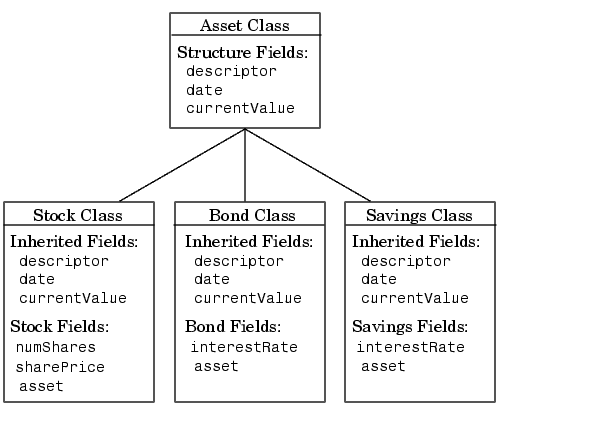

| Programming |   |
Example -- Assets and Asset Subclasses
As an example of simple inheritance, consider a general asset class that can be used to represent any item that has monetary value. Some examples of an asset are: stocks, bonds, savings accounts, and any other piece of property. In designing this collection of classes, the asset class holds the data that is common to all of the specialized asset subclasses. The individual asset subclasses, such as the stock class, inherit the asset properties and contribute additional properties. The subclasses are "kinds of" assets.
Inheritance Model for the Asset Class
An example of a simple inheritance relationship using an asset parent class is shown in this diagram.

As shown in the diagram, the stock, bond, and savings classes inherit structure fields from the asset class. In this example, the asset class is used to provide storage for data common to all subclasses and to share asset methods with these subclasses. This example shows how to implement the asset and stock classes. The bond and savings classes can be implemented in a way that is very similar to the stock class, as would other types of asset subclasses.
Asset Class Design
The asset class provides storage and access for information common to all asset children. It is not intended to be instantiated directly, so it does not require an extensive set of methods. To serve its purpose, the class needs to contain the following methods:
Other Asset Methods
The asset class provides inherited data storage for its child classes, but is not instanced directly. The set, get, and display methods provide access to the stored data. It is not necessary to implement the full complement of methods for asset objects (such as converters, end, and subsindex) since only the child classes access the data.
 | Aggregation | The Asset Constructor Method |  |
© 1994-2005 The MathWorks, Inc.